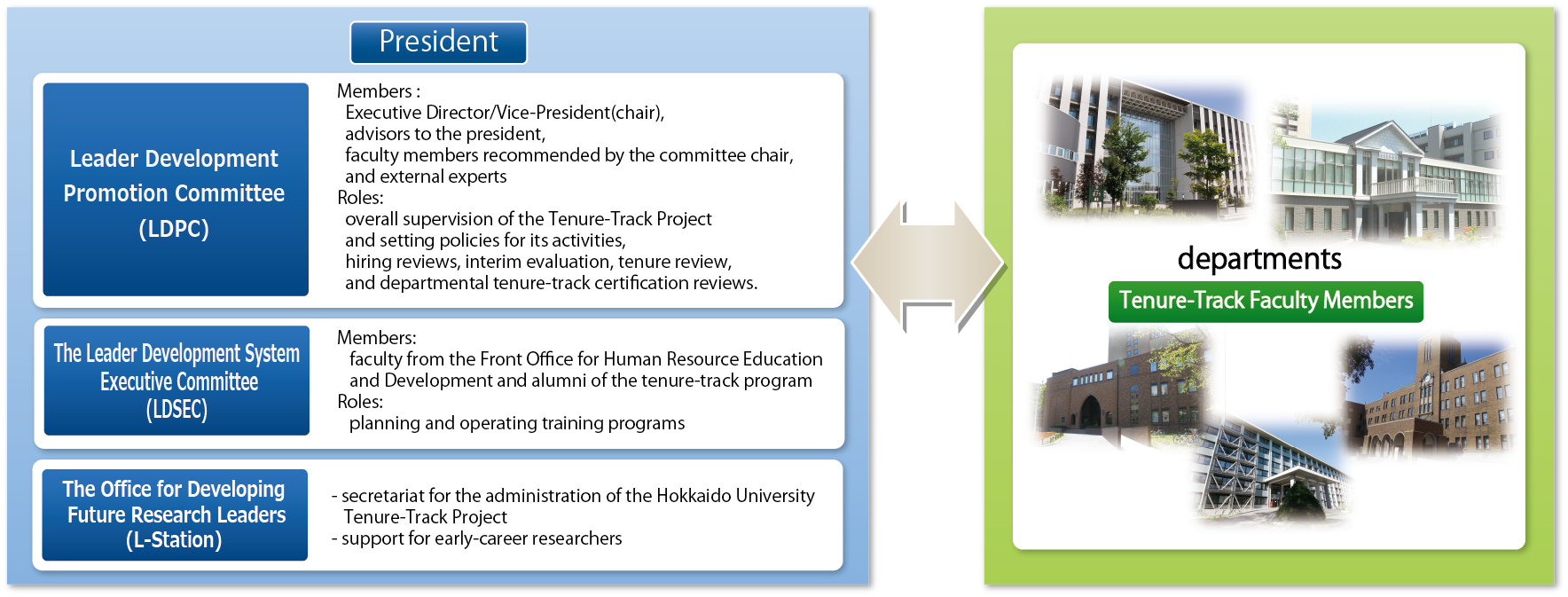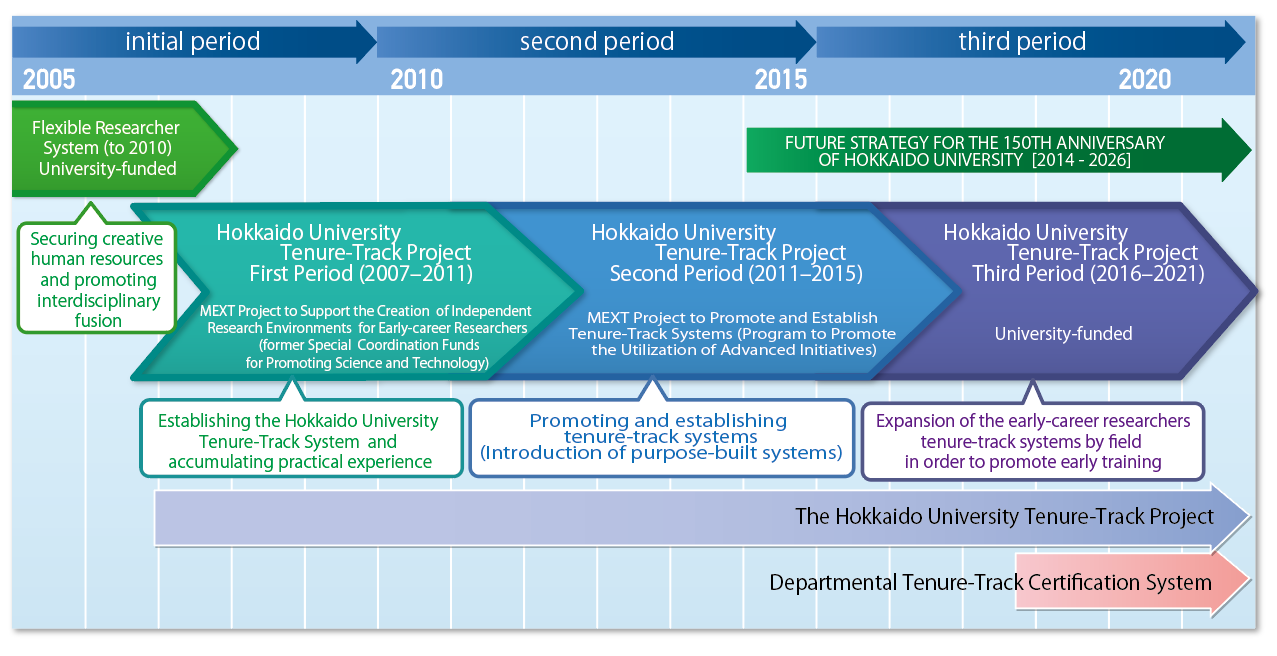Achieving the sustained development of the University through the active participation
For Hokkaido University to recognize its social responsibility and achieve sustainable development, the youngest of our teaching staff will have to play active roles in the university’s future operation. In order to attract a flow of competent early-career researchers both from Japan and overseas, Hokkaido University has promoted the tenure-track system in an effort to spread it across the university. Reflecting the fact that many Nobel laureates have won the prize because of research results obtained in their thirties, the tenure-track system at Hokkaido University encourages researchers in that age range by providing them with strong support and an ideal environment in which to concentrate on their research activities.
The tenure-track system at Hokkaido University expects tenure-track teachers not only to be at the top of their own research fields, but also to contribute to helping the university as a whole reach the world’s top level. For this purpose, the system also emphasizes leader development support. One such measure is the “Proposal to the President,” in which tenure-track researchers make a presentation to the president of the university on global issues such as research systems in overseas countries and prospective targets of future research. The system also provides them with opportunities for various outreach activities, including high school and public lectures. Through these activities, we expect those researchers who have promoted to tenured positions to become leaders—first in their respective departments and then in the university overall—and to take a key role in management.
The tenure-track system seeks researchers who do not confine themselves within the boundaries of their specialized research fields, but who actively connect with researchers in different fields and cooperate with other people while also demonstrating strong leadership. It is therefore our strong desire to create a future for Hokkaido University in which these passionate researchers can rise to the challenge of its leadership.
Three Pillars of the Tenure Track at Hokkaido University
The University’s Tenure-Track Project consists of the three pillars of 1) the Hokkaido University tenure-track system, which is standardized at the university-wide level, 2) the departmental tenure-track certification system, which facilitates the widespread application of the tenure-track system, and (3) the training and support programs targeting all tenure-track faculty members.
Hokudai Type Tenure-Track System
This tenure-track system, standardized across Hokkaido University, has been established with the objective of developing next-generation leaders. The system trains and supports early-career researchers based on open recruitment and personnel systems.
Departmental Tenure-Track Certification System
This is a system that supports the adoption of the tenure-track system by individual departments. It furthers the widespread application of the tenure-track approach in keeping with the diverse needs of individual departments.
Training Programs
These are training and support programs provided to tenure-track faculty members. Programs under this project are widely available to early-career researchers across the University.
Organization
Furthering the promotion and establishment of tenure-track with a university-wide system
The Hokkaido University Tenure-Track Project is overseen by the Leader Development Promotion Committee (LDPC). This steering committee, which chaired by an Executive Director/Vice-President, is made up of advisors to the president, faculty members recommended by the committee chair, and external experts. In addition to the overall supervision of the Tenure-Track Project and setting policies for its activities, the committee carries out a variety of tasks with reference to tenure-track faculty members, including hiring reviews, interim evaluation, tenure review, and departmental tenure-track certification reviews. The Leader Development System Executive Committee (LDSEC) is made up of faculty from L-Station and Development and alumni of the L-Station program. In addition to planning and operating training programs, other duties performed by the LDSEC include reviewing and providing advice on funding support applications related to on-the-job training programs. L-Station serves as a secretariat for the administration of the Hokkaido University Tenure-Track Project and provides support for early-career researchers.

History
Achievements and Experiences Over 14 Years and Three Project Periods
Projects oriented to the development of early-career researchers at the University date back to the flexible researcher system that began in 2002, and the spirit, cultivated in that project, of hiring creative personnel and promoting interdisciplinary fusion became the foundation of Hokkaido University’s tenure-track system.
The Hokkaido University Tenure-Track Project began in earnest with its adoption in 2007 under a Ministry of Education, Culture, Sports, Science and Technology (MEXT) project supporting the creation of independent research environments for early-career researchers, and this initial period was occupied with the construction of the system and the accumulation of practical experience. During the subsequent second mid-term period, with financial support from the MEXT subsidy project, we built a variety of tenure-track systems and worked to promote and establish the systems at the university-wide level. During the third mid-term period following the conclusion of the subsidy project, we established a Departmental Tenure-Track Certification System, operational since 2019, that would support the introduction of the tenure-track system at the departmental level.

